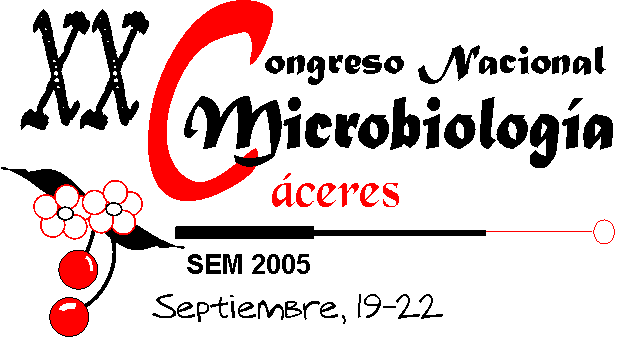

P - 145
Department of Plant Physiology, Faculty of Biology, Complutense University, José Antonio Novais Av., 28040 Madrid. E-mail: msacrist@bio.ucm.es
Xanthomonas albilineans is the leaf scald pathogen, a bacterial-vascular disease of sugarcane. An invading organism generally enhances the production of released exopolysaccharides. However, a primary response of sugarcane plants to infection seems to be the production of glycoproteins. These glycoproteins are produced from structural polymers of cell wall of parenchymatous cells, which are partially hydrolysed by a glycosidase to release mainly high molecular mass glycoproteins (HMMG) to the cytosol and later mid molecular mass glycoproteins (MMMG). Germination rate of Ustilago scitaminea teliospores (smut disease pathogen in sugarcane) decreased about 50% after their contact with HMMG and MMMG. Also, sugarcane glycoproteins were able to bind to Gluconacetobacter diazotrophicus cells(endophyte of sugarcane), but they didn´t bind efficiently to Leuconostoc mesenteroides and Erwinia amylovora (epiphytic bacteria on leaf surfaces of sugarcane but pathogen of Rosaceae). Are sugarcane glycoproteins capable to discriminate between pathogenic and non-pathogenic bacteria?. To a best knowledge of the role of these glycoproteins in the cell recognition between microorganisms and plants, specific receptors for them in the cell wall of X. albilineans have been isolated.
X. albilineans, strain NCPPB 887, was cultured on Wilbrink medium at 37º C. HMMG and MMMG were purified from juice of sugarcane stalks. Both glycoproteins were labelled with FITC and used for binding to bacterial cells. Desorption assays with different sugars were achieved to investigate the nature of the carbohydrate moiety related to the binding of glycoproteins to bacteria. Also, binding assays were followed by optical microscopy.
Both glycoproteins were linked to cyanogen bromide-actived agarose in beads of 5.0 cm x 1.0 cm and used to retain selectively glycoproteins previously extracted from bacterial cell walls. Total cell wall glycoproteins and that eluted from affinity beads were analysed by capillary electrophoresis.
About 95% of MMMG and 97% of HMMG were bound to bacteria cells according to fluorescence assays. Both glycoproteins were desorbed from bacterial cell walls by addition of different sugars. The highest desorption was carried out with galactitol. Cytoagglutination, indicating the binding of glycoproteins to the cell surface, was produced when bacteria were incubated with sugarcane glycoproteins. Bacterial receptors for MMMG and HMMG are anionic glycoproteins with relative retention times values of 1.388 min and 1.536 min. Nine different receptors for MMMG were desorpted with sucrose and only 5 with galactitol, whereas six different receptors for HMMG were desorbed with sucrose and 4 with galactitol. Therefore, several bacterials glycoproteins could ben considered as receptors for both sugarcane glycoproteins, having different number of binding points between their proteic domain and the saccharide domain of sugarcane glycoproteins.